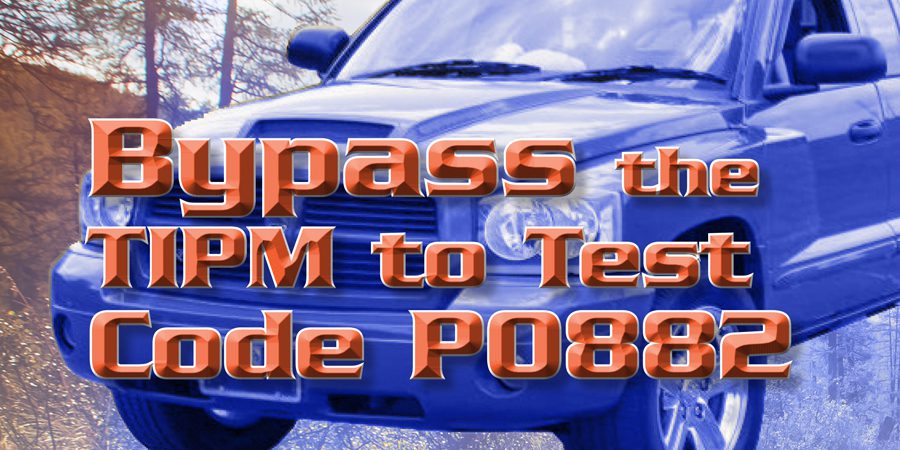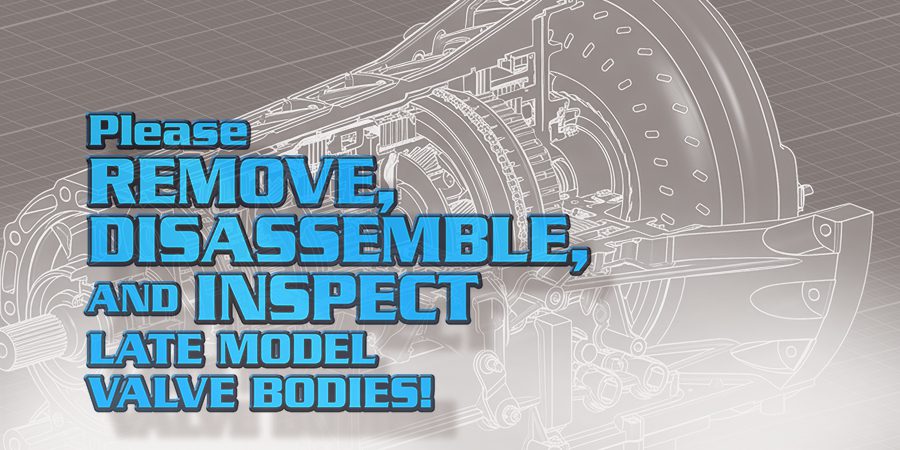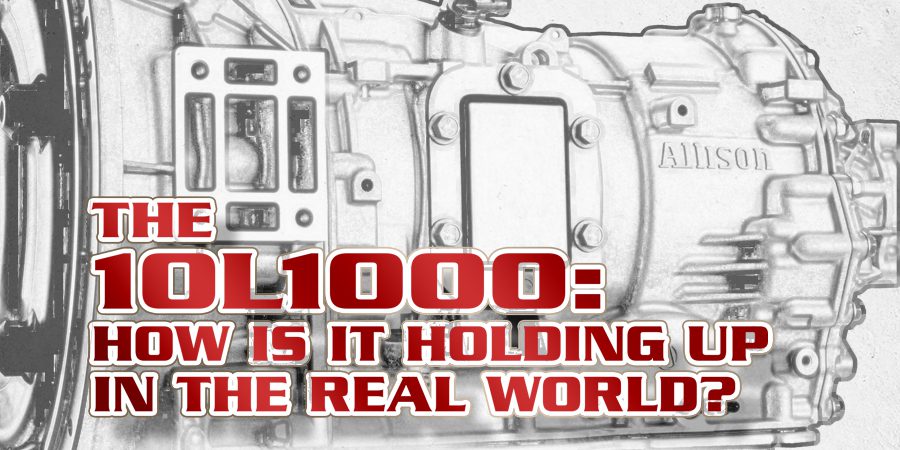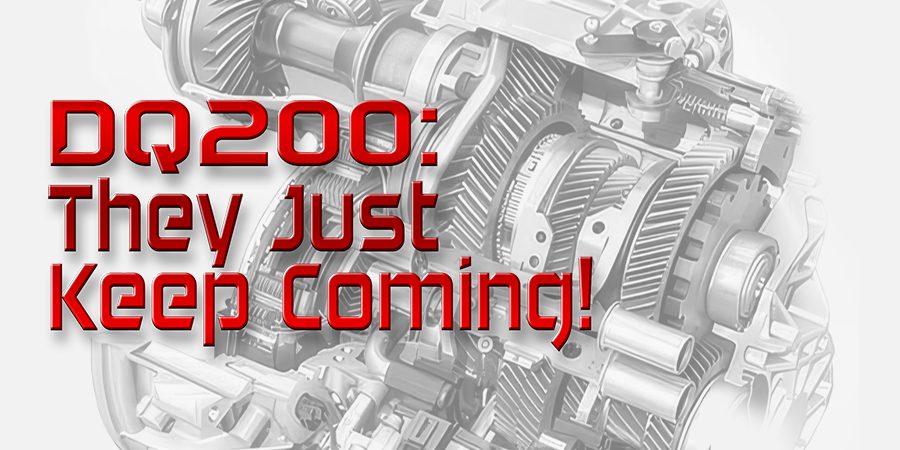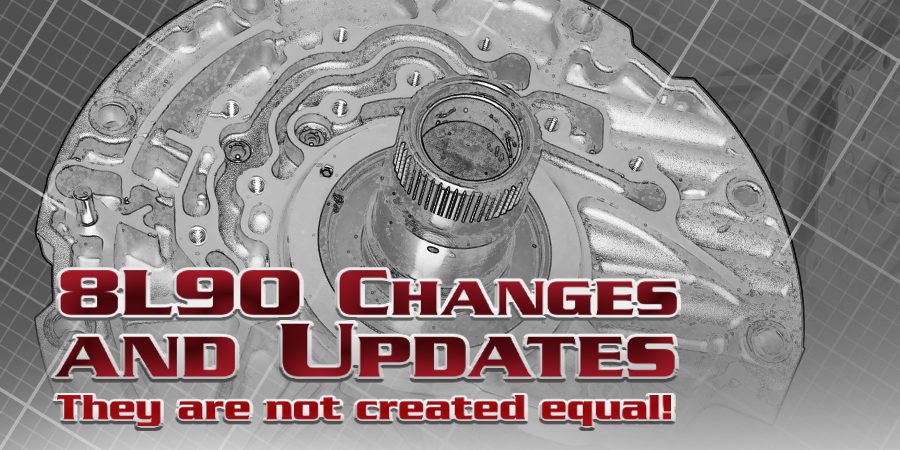Since the introduction of the Subaru Lineartronic in 2010, there has been an air of mystery surrounding this newly designed CVT unit. Anyone who has witnessed the antics of the Subaru Justy CVT no doubt was scratching their head with wonder and amazement at the gall of the Subaru engineering department to even suggest putting another CVT unit on the road! However, the Lineartronic design has proven itself to be a reliable workhorse capable of handling Subaru’s powerplants and the habits of American drivers. Needless to say, they are not indestructible, but they survive within the factory warranty and beyond. Now, we are seeing these units more frequently in the aftermarket with higher mileage and common problems. In this article, we will look at the similarities and differences between the unit variants as well as faults and fixes.
 AT A GLANCE
AT A GLANCE
The Lineartronic CVT transmission has two different designations; the TR580 and the TR690 (figure 1). They are similar but have noteworthy differences. One major difference is the actual size of these units. The TR690 is longer than the TR580. The TR690 added a section between the main case and the extension housing that contains the forward and reverse selection components (figure 2).
The TR580 incorporates the forward and reverse selection components in front of the pulley assembly. This denotes an operational difference between the two units. On the TR580, the chain and pulley assembly changes rotation depending on forward or reverse selection. However, the chain and pulley assembly on the TR690 always rotates in the same direction no matter if forward or reverse is selected.
THE TR580 ARCHITECTURE
The TR580 oil pump is chain-driven by the turbine shaft. The Secondary Pressure Sensor (line pressure), Range Sensor, and speed sensors (primary pulley, secondary pulley, and turbine) are serviceable on the case. The AWD transfer clutch is located in the extension housing.
The TCM is located under the dash on the driver’s side on early applications. On later applications, it is bolted to the top of the case. The valve body on this variant is located at the top of the case. The valve body must be removed to service the solenoids inside this unit.
THE TR690 ARCHITECTURE
The TR690 oil pump is also chain-driven. In addition, the Secondary Pressure Sensor (line pressure), Range Sensor, speed sensors (primary pulley, secondary pulley, and turbine), and a Front Wheel Speed sensor are located externally on the case.
The TR690 adds an input clutch and reduction gears. These components are not found in the TR580 model. The input clutch and reduction gears are splined to the primary pulley. The reduction drive gear drives the reduction driven gear which is connected to the forward clutch drum. The forward and reverse selection assembly is located in the intermediate case housing. Like the TR580, the AWD clutch is in the extension housing.
The valve body is located inside the oil pan on the bottom of the case. Like the TR580, the valve body must be removed to service the solenoids.
CHAIN DESIGN
All late-model Subaru CVT applications utilize a “Pull Design Chain” rather than the push design used by many manufacturers and early Subaru applications. The chain is known for its “link-and-pin” design (figure 3). This design chain only allows the rocker pins protruding from the chain to contact the pulleys. The total effective friction surface is the area of the link that contacts the pulleys.
FUNCTIONAL STRATEGY
There are an infinite number of ratios in all applications. Like other CVT applications, the pulley ratio (size) varies to change the output ratio. Most start with a low ratio of approximately 4.00:1, with a high ratio typically around 0.45:1. Early models change ratios like a snowmobile; smooth and shock-free. Later models (2015-on) incorporate “step-shift” software which gives the unit a “conventional unit” shift feel. Some models incorporate driver-controlled paddle shifters (figure 4). The functional strategy is outlined in the owner’s manual and can assist in the diagnostic process if you are unsure of the strategy of the model you are diagnosing.
AWD SYSTEM DEFAULT ACTIONS AND FAILSAFE
The Subaru AWD system provides all-wheel-drive operation by controlling power to the rear driveshaft. This design is similar to earlier model conventional transmissions. A transfer clutch provides power to the rear wheels. Secondary pressure is routed to the AWD solenoid located in the valve body. The solenoid and valving control the pressure to the transfer clutch.
Most sensor and solenoid electrical failures will result in the Secondary Line Pressure solenoid defaulting to maximum pressure. Most transmission-related DTCs lead to high line pressure and aggressive garage shifts. The Primary Ratio Up and Primary Ratio Down solenoids may also default to the off position leading to a single fixed pulley ratio of approximately 1.5:1. System hydraulic failures can result in chain slip if secondary pressure is lost. If the chain slips, both the chain and pulley will be damaged. Monitoring your scanner’s primary and secondary pulley speed sensor parameters in graphing mode or with a scope will show varying pulley speeds indicating chain slip issues.
Oil pressure is measured in megapascals (about 145 psi = 1 megapascal). Typical pressure runs in the 5-6 megapascal range (800-1000 psi). Make sure your gauge can handle the pressure generated, or injury may occur!
TRANSMISSION FLUID GALORE!
Here is a twist that can turn a simple job into a full-blown nightmare. Subaru has changed the formulation of their CVT fluid based on model year AND application. It is imperative to use the correct fluid based on the model year and vehicle application. Failure to do so will lead to performance issues and unit failure. The Subaru CVT fluid type breakdown is as follows:
- CVTF C-30 Blue (Original Fluid- Discontinued in 2015)
- CVTF II Green replaced the C-30 fluid. (Used from 2015-2019)
- CVTF III Low Viscosity Green (Used in both the TR580 and TR690, fluid use depends on vehicle application)
- High Torque Orange (Forester Turbo and WRX)
- High Torque Low Viscosity Amber/ Orange (Accent, 2020 Legacy Outback with 2.4L turbo engine)
Contact the Subaru service department for the correct fluid based on the vehicle VIN if there is a doubt. Fluid service is recommended only for severe duty use at 40,000 km intervals. Otherwise, the fluid is considered to be lifetime use.
HARD GARAGE SHIFTS
There are several DTCs that result in elevated line pressure. Address and correct all DTCs first. Then, monitor line pressure commanded values and actual values with your scan tool. Finally, conduct the “Learning Control Pressure procedure” with your scan tool.
If the issue persists, conduct the “Extra Learning Control Pressure Procedure” with your scan tool. This procedure is designed specifically to relearn the garage shift adapt tables. To perform the extra learning control procedure, proceed as follows:
- TFT temperature between 86°-194°F (30°-90°C).
- Brake pedal depressed and engine speed at 800 RPM with the A/C OFF.
- Shift into Neutral for 5 seconds, shift into Reverse for 3 seconds, shift back into Neutral for 5 seconds. Repeat this process ten times, then shift into Neutral for 5 seconds.
- Shift into Drive for 3 seconds, shift back into Neutral for 5 seconds. Repeat this process ten times, then check to see if the engagements have improved.
Note that if harsh engagements persist after these procedures, there is likely an issue inside the unit. If the TCM is not commanding high pressure, but a pressure gauge indicates elevated pressure, a malfunction in the pressure regulator valve or pressure control solenoid mechanical function is likely.
TCC FAILING TO RELEASE
2014 and earlier (Oct 2013), Subaru applications may exhibit a condition where the TCC is not releasing fully when coming to a stop. Subaru has identified the issue as thrust washer wear internal to the torque converter (figure 5). The worn washer restricts the TCC oil release passage leading to the issue. Subaru released an updated converter design that uses a bearing rather than a washer that addresses the issue. The OEM Subaru part number is 31100AB172.
NO TCC APPLY
A common occurrence that brings these units to your shop is a complaint of no lock-up. The no lock-up condition is usually accompanied by a DTC P2763, Lock-up Duty Solenoid Circuit High. The diagnostic process leads us to first check the external circuit for a fault. Typically everything is verified to be in proper working order, which leads us inside the unit.
Now let’s look at the lock-up solenoid. A simple resistance test of the Lock-up Duty Solenoid can verify this issue (figure 6). The resistance for this solenoid is 12 ohms at 68° F. If the solenoid measures around 12 ohms heat the solenoid with a heat gun or an oil bath to around 200° F. If the solenoid is the problem, you’ll usually see the circuit open when it gets hot.
Subaru does not sell any solenoids separately. You must buy a new valve body from the dealer if you want a new solenoid. But there is another way by swapping solenoids from a core valve body. The lock-up duty, primary-up, primary-down, and the transfer clutch (AWD) solenoids are normally closed. These solenoids are interchangeable and can be swapped from a Gen 1 or Gen 2 valve body. You must cut and solder the solenoid wires for the lockup duty solenoid to exchange the solenoid. Note that if you are making wire repairs using shrink wrap, ensure that you use the oil-resistant type!
The Transfer Clutch (AWD) solenoid is also prone to failure. However, we have seen very few failures with the other solenoid locations; therefore, swapping solenoids is a reliable solution. Aftermarket off-shore solenoids are available, but they vary widely in quality and reliability.
Working on the late model technology can be intimidating. In addition, not being familiar with a unit creates added anxiety. Hopefully, with this information, you can approach Subaru Lineartronic CVTs with greater confidence!













